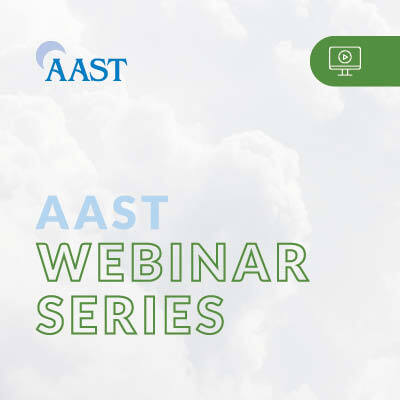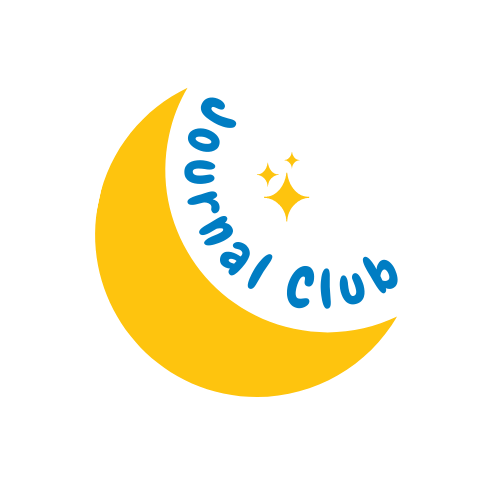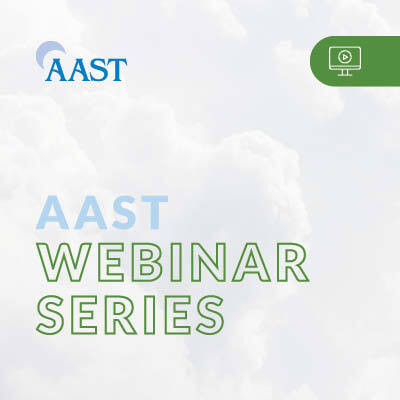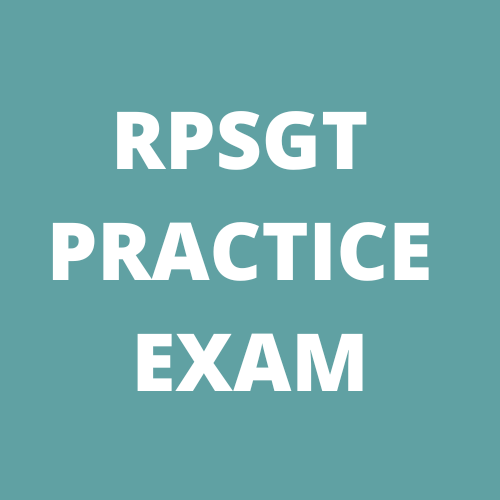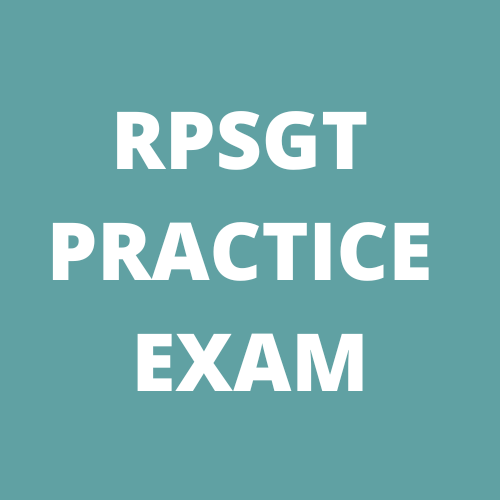
Catalog
90 Results
-
Contains 3 Component(s), Includes Credits
A2Zzz Q2 2024/ Volume 33/ Number 2
The 2024 Q2 issue of A2Zzz is here! Many prescription oximeters have FDA clearance but not FDA approval. The advent of over-the-counter (OTC) home oximetry with FDA approval provides a way to make home oximetry more available to patients and thereby allow physicians to have a greater amount of information regarding what is occurring with a patient’s blood oxygen levels during sleep, including in people diagnosed with or suspected of having obstructive sleep apnea (OSA).
Explore additional articles, including:
- On the Horizon: Over-the-Counter Pulse Oximetry
- The Sleep Navigator Role: An Example of Success
Updates to Claiming CECs From A2Zzz
AAST members looking to claim their free AAST continuing education credits (CECs) from reading the latest issue of A2Zzz will now need to complete a knowledge assessment in the Learning Center. Upon completion of the knowledge assessment, AAST members will be awarded their two free AAST CECs. For additional information on this change, please view the instructions for earning credits from A2Zzz.
-
Register
- Member - Free!
- More Information
-
Contains 3 Component(s), Includes Credits
A2Zzz Q1 2024/ Volume 33/ Number 1
The 2024 Q1 issue of A2Zzz is here! ChatGPT has rapidly grown in popularity as it allows people to quickly search for information as well as write and create content. A major drawback of the chatbot is that it provides plausible sounding but incorrect answers. This can be problematic for patients looking for medical information and has prompted sleep researchers to investigate the feasibility of using ChatGPT to generate patient educational materials on sleep disorders.
Explore additional articles, including:
- The Use of ChatGPT for Creating Sleep Disorders Education Materials: What You and Your Patients Should Know
- Rise and Shine: Professional Preparedness for the Year Ahead
Updates to Claiming CECs From A2Zzz
AAST members looking to claim their free AAST continuing education credits (CECs) from reading the latest issue of A2Zzz will now need to complete a knowledge assessment in the Learning Center. Upon completion of the knowledge assessment, AAST members will be awarded their two free AAST CECs. For additional information on this change, please view the instructions for earning credits from A2Zzz.
-
Register
- Member - Free!
- More Information
-
Contains 4 Component(s), Includes Credits
This presentation discussed barriers to effective communication and techniques used to improve day to day patient interactions to influence outcomes. These topics expand to all patient areas, but it focuses on some sleep specific scenarios. This course is also available through the California Board of Registered Nursing, Provider License No. CEP17872 for 1 contact hour.
This presentation discussed barriers to effective communication and techniques used to improve day to day patient interactions to influence outcomes. These topics expand to all patient areas, but we will focus on some sleep specific scenarios.
Objectives:
- Recognize the impact of low health literacy on sleep health outcomes
- Describe methods of communication techniques to support patients' therapeutic journey and wellbeing
- Evaluate patient understanding of condition/treatment options
Speakers:
- Robyn Woidtke, MSN, RN, RPSGT, CCSH, FAAST
Continuing Education:
- 1 AAST CEC after passing a short knowledge assessment in the AAST Learning Center
- Provider approved by the California Board of Registered Nursing, Provider License No. CEP17872 for 1 contact hour.
-
Register
- Non-member - $30
- Member - $15
- More Information
-
Contains 5 Component(s), Includes Credits
Panel of Senior Sleep Technologists sharing their experiences and lessons that have helped build their successful careers in the sleep center, sleep industry and sleep education.
A panel of senior sleep technologists will be sharing their experiences and lessons learned that have helped build their successful careers in the sleep center, and sleep industry.
Objectives:
1. Provide insight on what skillsets helped prepare for their current roles
2. Understand different roles in the sleep field
3. Discuss training not just for new employees, but ongoing to promote educational growth and promote career opportunitiesSpeakers:
- Sarah Brennecka, BA, RPSGT, AAST Education Advisory Committee Chair
- Bryan Beaudette, RPSGT, CCSH
- Tessa Klucznyk, RST, RPSGT
- Andrea Ramberg, RPSGT, CCSH
Continuing Education:
1 AAST CEC after passing a short knowledge assessment in the AAST Learning Center-
Register
- Non-member - $30
- Member - $15
- More Information
-
Contains 3 Component(s), Includes Credits
This webinar will provide an overview of sleep health through the lens of behavioral sleep medicine - addressing the fundamental functions of sleep, sleep disorders, and treating insomnia and CPAP non-adherence using evidence-based methodologies.
This webinar will provide an overview of sleep health through the lens of behavioral sleep medicine - addressing the fundamental functions of sleep, sleep disorders, and treating insomnia and CPAP non-adherence using evidence-based methodologies.
Objectives:
1. Provide an overview of normal human sleep functioning
2. Identify and assess common sleep disorders
3. Fundamentals of behavioral interventions for insomnia and CPAP adherence.
Natalia S. David, PsyD, DBSM
Director of Training, DrLullaby.com
Continuing Education:
- 1 AAST CEC after passing a short knowledge assessment in the AAST Learning Center
Access:
- Free with AAST Membership
- $30 for Non-Members
-
Register
- Non-member - $30
- Member - Free!
- More Information
-
Contains 13 Component(s), Includes Credits
People living within “the spectrum” of autism are known to struggle with sleep. Chiefly it’s insomnia, but circadian rhythm disorders, movement disorders of sleep, parasomnias, and other sleep issues are also common in both children and adults who have autism spectrum disorder (ASD). What is it about neurodivergence that leads to sleep problems? Or is it the other way around? YAMADA et al tries to dig more deeply to answer the question, looking more closely at two key theories about ASD which may reveal sleep as a kind of missing link that needs more control in future research. This month’s journal club seeks to demystify the puzzle of autism. We’ll shine a spotlight on sleep disorders that frequently occur in this patient population, then review YAMADA et al’s findings. Finally, sleep technologists will take a look at some strategies into best care practices and tools to inform how we work with patients, both pediatric and adult, who live on the spectrum.
Description: People living within “the spectrum” of autism are known to struggle with sleep. Chiefly it’s insomnia, but circadian rhythm disorders, movement disorders of sleep, parasomnias, and other sleep issues are also common in both children and adults who have autism spectrum disorder (ASD). What is it about neurodivergence that leads to sleep problems? Or is it the other way around? YAMADA et al tries to dig more deeply to answer the question, looking more closely at two key theories about ASD which may reveal sleep as a kind of missing link that needs more control in future research. This month’s journal club seeks to demystify the puzzle of autism. We’ll shine a spotlight on sleep disorders that frequently occur in this patient population, then review YAMADA et al’s findings. Finally, sleep technologists will take a look at some strategies into best care practices and tools to inform how we work with patients, both pediatric and adult, who live on the spectrum.
Recorded: 6/26/2023
CEC Credit(s): 1.0
Target Audience: Sleep technologists
Length: 1-hour-
Register
- Non-member - $30
- Member - $15
- More Information
-
Register
-
Contains 5 Component(s), Includes Credits Recorded On: 03/07/2023
Obstructive Sleep Apnea (OSA) in children effects of 2-3% of all children, however in light of the rising prevalence of childhood obesity, the estimated prevalence has increased to 6-10% of all children. While the first line of therapy for Pediatric OSA in children consists of upper airway surgery via surgical removal off the adenoids and tonsils, it has become increasingly clear that surgery efficacy is limited in older and//or obese children. As a result, alternative therapies, including positive airway pressure (PAP) therapy has become mainstay for a lot of children. The application of PAP devices in children is unique and requires further attention to ensure that PAP therapy is successful.
Obstructive Sleep Apnea (OSA) in children effects of 2-3% of all children, however in light of the rising prevalence of childhood obesity, the estimated prevalence has increased to 6-10% of all children. While the first line of therapy for Pediatric OSA in children consists of upper airway surgery via surgical removal off the adenoids and tonsils, it has become increasingly clear that surgery efficacy is limited in older and//or obese children. As a result, alternative therapies, including positive airway pressure (PAP) therapy has become mainstay for a lot of children. The application of PAP devices in children is unique and requires further attention to ensure that PAP therapy is successful.
Objectives:
- Provide an overview of Obstructive Sleep Apnea in children
- Distinguish indications for Positive Airway Pressure (PAP) therapy in children
- Discuss obstacles of PAP adherence in children
- Share real world data of PAP adherence in children
Rakesh Bhattacharjee, MD, FRCPC, DABP(SM), CBSM, DBSM, FAASM
Director of Sleep Medicine, Rady Children’s Hospital
Associate Clinical Professor of Pediatrics, UCSD
Continuing Education:
- 1 AAST CEC after passing a short knowledge assessment in the AAST Learning Center
Access:
- Free with AAST Membership
- $30 for Non-Members
-
Register
- Non-member - $30
- Member - $15
- More Information
-
Contains 1 Component(s)
The online RPSGT practice exams are interactive and provide you with immediate feedback.
The online RPSGT practice exams are interactive and provide you with immediate feedback.
-
Register
- Non-member - $30
- Member - $15
- More Information
-
Register
-
Contains 1 Component(s)
The online RPSGT practice exams are interactive and provide you with immediate feedback.
The online RPSGT practice exams are interactive and provide you with immediate feedback.
-
Register
- Non-member - $30
- Member - $15
- More Information
-
Register
-
Contains 1 Component(s)
The online RPSGT practice exams are interactive and provide you with immediate feedback.
The online RPSGT practice exams are interactive and provide you with immediate feedback.
-
Register
- Non-member - $30
- Member - $15
- More Information
-
Register










